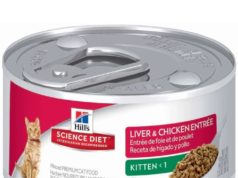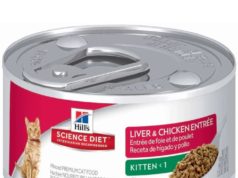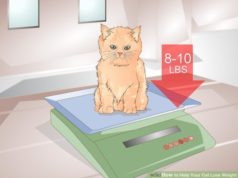How to diet a cat? It’s a question many cat owners ask when their feline friend starts to pack on the pounds. While our furry companions might love to indulge in treats and naps, their health depends on maintaining a healthy weight. This guide will walk you through the essentials of feline nutrition, weight management, and creating a safe and effective diet plan for your cat.
We’ll delve into the crucial nutrients your cat needs, explore the differences between their dietary requirements and ours, and provide insights into common cat food ingredients and their nutritional value. We’ll also discuss how to identify weight issues in your cat, the potential health risks associated with obesity, and the importance of consulting a veterinarian for personalized guidance.
Understanding Cat Nutrition
Understanding a cat’s dietary needs is crucial for their overall health and well-being. A balanced diet provides the necessary nutrients for growth, energy, and maintaining a healthy immune system.
Essential Nutrients for Cats
Cats require a specific set of nutrients that differ from humans. These nutrients are essential for their growth, development, and overall health.
- Protein: Cats are obligate carnivores, meaning they need a high-protein diet. Protein is essential for building and repairing tissues, producing enzymes and hormones, and providing energy. Recommended protein intake for adult cats is around 25-30% of their daily calorie intake.
- Fat: Fat is another crucial energy source for cats and helps with the absorption of certain vitamins. It also provides essential fatty acids like arachidonic acid and linoleic acid, which are important for skin and coat health. Recommended fat intake for adult cats is around 15-20% of their daily calorie intake.
- Carbohydrates: While cats can digest some carbohydrates, they are not a primary source of energy. A small amount of carbohydrates in their diet can be beneficial, but it should not be the main component. Recommended carbohydrate intake for adult cats is around 10-15% of their daily calorie intake.
- Vitamins: Cats need various vitamins for their overall health. These include vitamin A for vision and immune function, vitamin D for calcium absorption, vitamin E for antioxidant activity, and vitamin K for blood clotting. Commercial cat foods typically contain adequate amounts of essential vitamins.
- Minerals: Minerals are also essential for a cat’s health. These include calcium for bone health, phosphorus for energy production, magnesium for muscle function, and potassium for nerve function. Commercial cat foods typically contain adequate amounts of essential minerals.
- Water: Water is essential for hydration and various bodily functions. Cats should have access to fresh water at all times. Dehydration can lead to various health problems.
Differences Between Cat and Human Dietary Needs
Cats and humans have significantly different dietary needs due to their unique physiological differences.
- Obligate Carnivores: Cats are obligate carnivores, meaning they require animal-based protein to thrive. Humans are omnivores, capable of digesting both plant and animal-based proteins. Cats lack the enzymes necessary to break down plant-based proteins efficiently, making them unsuitable for their diet.
- Taurine: Cats cannot synthesize taurine, an essential amino acid crucial for heart, vision, and reproductive health. They must obtain taurine from their diet. Humans can synthesize taurine in their bodies.
- Arachidonic Acid: Cats cannot synthesize arachidonic acid, an essential fatty acid crucial for skin, coat, and immune health. They must obtain arachidonic acid from their diet. Humans can synthesize arachidonic acid in their bodies.
Common Cat Food Ingredients and Nutritional Value
Commercial cat foods typically contain a variety of ingredients to provide a balanced diet. Understanding the nutritional value of these ingredients can help you choose the best food for your cat.
- Meat and Meat By-Products: These are the primary protein sources in cat food. Meat by-products include organs, bones, and other edible parts of the animal. They are a good source of protein, but their quality can vary depending on the source.
- Poultry: Chicken, turkey, and duck are common protein sources in cat food. They are a good source of protein, essential fatty acids, and vitamins.
- Fish: Fish is a good source of protein, omega-3 fatty acids, and taurine. It is often included in cat food for cats with skin and coat problems.
- Grains: Grains like corn, wheat, and rice are often included in cat food as a source of carbohydrates and fiber. However, some cats may be sensitive to grains. Grain-free cat foods are available for cats with grain sensitivities.
- Vegetables: Vegetables are a good source of vitamins, minerals, and fiber. They are often included in cat food in small amounts.
- Fruits: Fruits are a good source of vitamins, minerals, and antioxidants. They are often included in cat food in small amounts.
- Supplements: Some cat foods contain added supplements like taurine, L-carnitine, and glucosamine to address specific nutritional needs.
Identifying Weight Issues
Determining whether your cat is overweight or obese is crucial for their overall health and well-being. While a little extra fluff might seem harmless, excess weight can significantly impact your feline friend’s quality of life.
Assessing a Cat’s Weight
Determining if your cat is overweight or obese involves a visual assessment and a hands-on approach.
- Visual Assessment: Observe your cat from above and the side. A healthy cat should have a visible waistline, with a slight tuck-in just behind the ribs. If you can’t see a waistline or the belly appears round and full, it’s a sign of potential weight issues.
- Hands-on Assessment: Gently feel along your cat’s ribs. You should be able to feel their ribs easily without having to press too hard. If you can’t feel the ribs, it indicates potential overweight or obesity.
- Body Condition Score (BCS): Veterinarians use a Body Condition Score (BCS) to assess a cat’s weight. This system assigns a score from 1 to 9, with 1 being severely underweight and 9 being severely obese. A score of 5 is considered ideal for most cats.
Health Risks of Feline Obesity
Obesity in cats can lead to a range of health problems, significantly impacting their lifespan and quality of life.
- Joint Problems: Excess weight puts extra strain on joints, leading to arthritis and other joint issues.
- Diabetes: Obesity increases the risk of developing diabetes, a condition that affects the body’s ability to regulate blood sugar.
- Heart Disease: Overweight cats are more prone to heart disease, leading to heart failure and other cardiovascular issues.
- Liver Disease: Obesity can contribute to fatty liver disease, a condition that can damage the liver.
- Respiratory Problems: Excess weight can put pressure on the lungs, making breathing difficult.
- Reduced Life Expectancy: Obesity is linked to a shorter lifespan in cats.
Role of a Veterinarian
A veterinarian plays a crucial role in assessing a cat’s weight and recommending a diet plan.
- Comprehensive Assessment: Veterinarians perform a physical exam, including checking the cat’s weight, BCS, and overall health.
- Blood Work and Tests: They may recommend blood work and other tests to rule out underlying medical conditions that could be contributing to weight gain.
- Diet Plan Recommendations: Based on the assessment, they can create a personalized diet plan, including appropriate food choices and portion sizes.
- Monitoring Progress: Regular follow-up appointments allow the veterinarian to monitor the cat’s progress and adjust the diet plan as needed.
Diet Strategies for Weight Loss: How To Diet A Cat
Now that you understand the basics of cat nutrition and how to identify weight issues, let’s dive into the strategies for helping your feline friend shed those extra pounds.
Types of Cat Food Diets
The right diet is crucial for a successful weight loss journey. Here’s a breakdown of different types of cat food diets and their pros and cons:
| Type of Diet | Pros | Cons |
|---|---|---|
| Prescription Diet | Specifically formulated for weight loss, often containing lower calories and higher fiber content. Provides balanced nutrition and helps manage underlying health conditions. | Can be expensive. Requires a veterinarian’s prescription. May not be palatable to all cats. |
| Commercial Weight-Loss Diet | Widely available and often more affordable than prescription diets. Many options cater to specific needs like senior cats or cats with allergies. | May not be as effective as prescription diets. Quality and nutritional content can vary significantly between brands. |
| Homemade Diet | Allows for greater control over ingredients and potential for fresher, more natural food. | Requires careful planning and preparation to ensure balanced nutrition. Can be time-consuming and may not be suitable for all cats. |
Transitioning to a New Diet
Sudden diet changes can upset your cat’s digestive system. Gradually transitioning to a new diet is essential.
- Start by mixing a small amount of the new food with the old food for a few days. Gradually increase the proportion of the new food over a week or two.
- Observe your cat’s appetite and stool consistency during the transition. If you notice any digestive issues, slow down the transition or consult your veterinarian.
Weight-Loss Food Options
Here are some common weight-loss food options for cats, along with their approximate calorie content and nutritional breakdown:
- Hill’s Science Diet Metabolic Weight Management (300 calories per cup): This prescription diet is designed to help cats lose weight and maintain a healthy weight. It contains a high-protein, low-fat formula with L-carnitine to support fat metabolism.
- Purina Pro Plan Veterinary Diets OM Weight Management (320 calories per cup): Another prescription diet, this one features a blend of fiber and protein to promote satiety and help cats feel full. It also contains L-carnitine and omega-3 fatty acids for joint health.
- Blue Buffalo Weight Control Formula (350 calories per cup): This commercial diet is formulated with lean protein, fiber, and omega-3 fatty acids to help cats lose weight and maintain lean muscle mass.
- Wellness Complete Health Weight Management (340 calories per cup): This commercial diet features a blend of protein, fiber, and antioxidants to support healthy weight loss and overall well-being.
It’s important to remember that every cat is different, and their individual needs may vary. Consult with your veterinarian to determine the best weight-loss diet for your cat.
Exercise and Activity

Just like humans, cats need regular exercise to maintain a healthy weight and overall well-being. Exercise helps burn calories, strengthens muscles, and improves cardiovascular health. A sedentary lifestyle can lead to obesity, which can increase the risk of various health problems in cats, such as diabetes, arthritis, and heart disease.
Increasing Activity Levels, How to diet a cat
Encouraging your cat to be more active can be achieved through various methods, including playtime and environmental enrichment.
- Playtime: Interactive play sessions are crucial for keeping your cat engaged and active. Use toys that encourage chasing, pouncing, and jumping, such as feather wands, laser pointers, and toy mice. Aim for at least two 15-minute play sessions daily, varying the toys and play styles to keep your cat interested.
- Environmental Enrichment: A stimulating environment can encourage natural behaviors and increase activity levels. This can include providing climbing structures, scratching posts, and hiding places. You can also create a “catio” or outdoor enclosure for your cat to explore and enjoy fresh air.
Interactive Toys and Puzzle Feeders
Interactive toys and puzzle feeders provide mental and physical stimulation, encouraging your cat to work for their food. These toys can help manage weight by slowing down eating and increasing activity levels.
- Interactive Toys: Toys that require your cat to solve puzzles or chase moving objects, such as puzzle balls, treat dispensers, and motorized toys, can provide both mental and physical stimulation.
- Puzzle Feeders: Puzzle feeders encourage your cat to work for their food, promoting mental stimulation and slowing down eating. This can be beneficial for weight management by making meals more challenging and rewarding.
Last Recap
By understanding your cat’s nutritional needs, implementing a balanced diet, and encouraging regular exercise, you can help your furry friend achieve a healthy weight and live a longer, happier life. Remember, consistency is key, and a gradual approach is always best. Don’t hesitate to seek professional advice from your veterinarian to ensure your cat’s well-being throughout their weight loss journey.
FAQs
How often should I feed my cat?
The frequency of feeding depends on your cat’s age, activity level, and diet. Consult your veterinarian for personalized recommendations.
Can I give my cat human food?
While some human foods are safe for cats in moderation, it’s crucial to avoid foods that are toxic to them. Consult your veterinarian for a list of safe and unsafe human foods for cats.
What are some signs of a healthy cat?
A healthy cat will have a shiny coat, bright eyes, and a healthy appetite. They should be active and playful, with a normal body weight and no signs of illness.
Dieting a cat can be tricky, as their needs are different from ours. You need to consider their age, activity level, and overall health. It’s important to understand what constitutes a balanced diet for them, just like it’s crucial for us to understand what is the best diet for overall health.
A good diet for your cat can help prevent obesity and other health problems, so consult with your veterinarian to find the right food for your furry friend.
Dieting your cat can be tricky, but adding fiber is a great way to help them feel fuller and regulate their digestion. You can check out ways to add fiber to diet for some helpful tips. Remember to consult with your vet before making any major changes to your cat’s diet.
Dieting a cat is all about portion control and high-quality food. Just like humans, cats can be susceptible to weight gain, which can lead to health issues. However, it’s crucial to avoid giving them diet pills, as they can be diet pills dangerous for feline health.
Instead, consult a veterinarian for personalized advice on how to help your cat achieve a healthy weight through diet and exercise.























